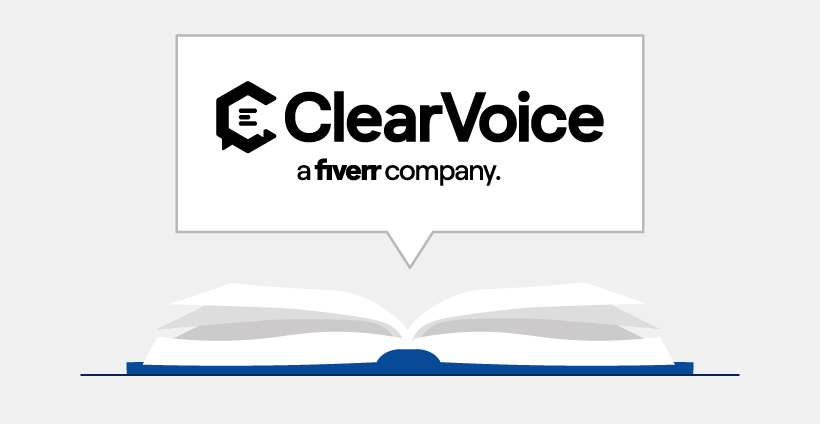As you may recall, we shared the skinny on long-form content recently on our blog. If you haven’t read it yet, here’s a quick recap:
Long-form brand content comes in many forms, and seeks to educate, inform, and inspire readers with in-depth content exceeding 1,200 words to upwards of 20,000 words. Ebooks, white papers, case studies, and even meaty articles fit in this definition. Long-form content also:
- Has a substantial word count
- Can be gated or non-gated content, but typically a lead magnet
- Has one central theme, typically broken up with multiple sub-topics related to your business
- Typically includes graphics, visuals, and pictures to support the reader’s retention and understanding of a topic
I’m sure you like this very dry definition, but if you want to implement a long-form content strategy as a brand soon, you’re going to want real-life examples. So here are four examples of brands who kick a$$ at producing long-form content lead magnets and how you can learn from their successes:
1. IBM – Developer Works – Long-form guides
Most brands have heard of IBM Developer Works, and there’s a reason for this: They are an all-knowing expert and go-to resource for businesses. While they could opt to write exclusively about how to operate their own products, their editorial scope is expansive with numerous guides on all things business and technology. Within the IBM website, there’s an overflow of robust guides and posts on a range of topics like analytics, AI, data, collaboration, security, and other tech topics within their Developer Works hub.
There approach is as follows:
- Allie, a brand manager at XYZ Brand, goes to Google to look for advice on using big data for brand marketing. She finds some great posts on inbound marketing and lead nurturing on IBM’s blog.
- So impressed with what she’s read, she notices a call-to-action at the bottom of the post that leads to an insightful ebook on best practices.
- Allie thinks the ebook will be useful, so she submits her name and email address, and then downloads it.
- Allie’s information flows in as an inbound lead. Allie willingly opts-in to join IBM’s email list and soon becomes an active lead. IBM, meanwhile, does not actively market to Allie at all (at least not yet).
Takeaway:
No matter your brand sector, there is a place for informative guides and resources. Creating guides presents an opportunity to capture potential customers in the “discovery phase” of the customer journey — the step prior to purchasing a product. Take the time to create articles and resources that would nurture a prospective customer in this phase. Tailor your content to your key audiences and answer:
- What do they want to know?
- What interests them?
- What motivates them?
- What pain points do they have?
Use these answers as the basis of your lead magnet copy. If you can successfully deliver readers something of value, people will likely to continue engaging with your brand and will happily do business with you.
2. Wordstream – Long-form blogs
As a brand marketer, Google is a go-to for any and all research. On a daily basis you look up “What is…”, “How does ____ work?” and multiple other questions, seeking in-depth answers.
You’ll notice a common denominator with a lot of search results: The top search results typically have a high word count. (Check out the first installment of this series for more info on the correlation of word count and search rankings).
Here’s the cliff notes version of search rank and word count:
Google’s M.O. is to provide searchers with the most relevant, detailed responses to search queries, which often times are supported by long-form content. Long-form content inherently provides more weighty resources for readers; ergo, Google ranks it higher than a basic, base web page. Beyond this, one of the major contributors to Google’s search algorithm is time-on-page, which is usually higher when a web visitor consumes long-form content.
Take it from Wordstream, who overhauled their blog with long-form content. Here is their approach:
“Our average piece of content was around 1,000 words or fewer. We focused heavily on SEO, including keyword optimization. The only problem with this strategy? We were getting a lot of search traffic, but not a lot of return traffic, direct traffic, or brand searches, and our user engagement metrics – stuff like bounce rate and time on site – were pretty low. So we switched up our tactics a bit and started incorporating more long-form articles into our content strategy. The goal was to increase user engagement – and it worked extraordinarily well. By focusing on word count, Wordstream tripled the average time on site from 1:33 to 4:35 and improved domain-level search rankings as well.”
Takeaway:
Word count not only matters for ebooks, whitepapers, case studies, and other lead magnets, but also for blog posts. Stop producing generic content in the 500 to 700 word range because it can only go skin-deep to help readers understand a topic. (Plus, at this length you may not rank on the first page of Google.)
3. Zillow – Data studies
Zillow, the online real estate website, uses data to create content. Proficient in real estate content aggregation and data collection, it has data on more than 110 million homes, collecting information on value estimates, amenities, square footage, lot size, average price of houses for sale nearby, and tons of other data points.
As well as its more light-hearted “best of” and listicle web content, Zillow has a huge bank of data-driven studies showcasing real estate trends that would impact real estate professionals, renters, and home buyers. This includes proprietary and original studies on market data, forecasts, buyer data, renter data, and home values.
Takeaway:
Producing data studies serves as a dynamic platform for educating and enlightening readers. They are also kick-a$$ assets for your brand because it validates your expertise as a thought leader.
Here are some tips when creating a data study:
- Choose a topic that is specific and proprietary to your business, giving you a competitive advantage.
- Garner deep insights, but ones that should be easily digestible to a consumer.
Produce objective results with an unbiased perspective so readers can make a more informed decision about your brand, product, or service.
4 – Clearvoice – Case studies
Case studies are another type of magnetizing long-form content. Publishing case studies is beneficial for a few reasons:
- The story format makes the information easier for people to digest.
- It positions your brand as an expert in your niche.
- It enables you to prove your marketing claims through quantifiable proof.
- It can earn backlinks and social chatter.
ClearVoice produced a case study on our own blog’s success. We review the whole process in depth, from our content audit to a month-by-month progress report on our content strategy reboot. In the case study, we share how we increased monthly organic blog traffic 1,665%, from ~2,900 monthly page views at our low point to ~51,500 sustainable monthly page views (and still growing). By producing the case study, we were able to share our process, successes, and pain points and also provide social proof of our quality and knowledge in content marketing.
Takeaways:
Create a case study to showcase your brand’s successes. Here are some steps to do so:
Step 1. Choose a topic and client.
The ideal topic for your case study depends upon what your brand does and who your clients are. Ask yourself:
- What is the goal of this case study?
- What product or service do we want to promote?
- What problem are we helping our clients solve with this product or service?
Once you have chosen the topic, you need to select a topic that helps you best illustrate your brand strengths. These questions will help you determine whom to include:
- What topic best represents us to our target audience?
- Is the topic well known enough to provide effective social proof?
- Can our success be proven?
- Do we have (or can we get) the data needed to build an effective case study?
Step 2. Set expectations.
Set clear expectations to ensure the study is completed on time and with precision. Start by reaching out to the involved parties and define your needs. Explain what information you’ll need, and who will do what.
Step 3. Collect relevant data.
Begin compiling the information you need.
Step 4. Create the case study.
Now that you have all the data, it is time to write the case study, create all the supporting graphics and lay it out in a PDF format. If you don’t have the needed talent in-house, hire a freelance designer.
All case studies follow this format, at least loosely:
- Summary: Share who the case study is about and what they do. Think of this as introducing the character of your story.
- Challenge: Explain what issues the company faced that your brand was able to help them solve.
- Implementation: This section covers the “how.”
- Solution: Now you share the results of all the data collected. Don’t just take the data at face value, but take the time to analyze it and explain what different variables might have caused changes in the data.
- Call-to-action: What do you want readers of the case study to do next? Tell them!
There are a lot of factors that go into creating long-form content, but it’s definitely easier to get a picture of how to do it when you see real-life examples.












